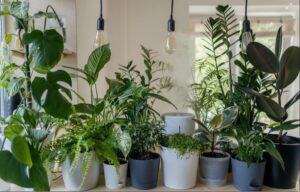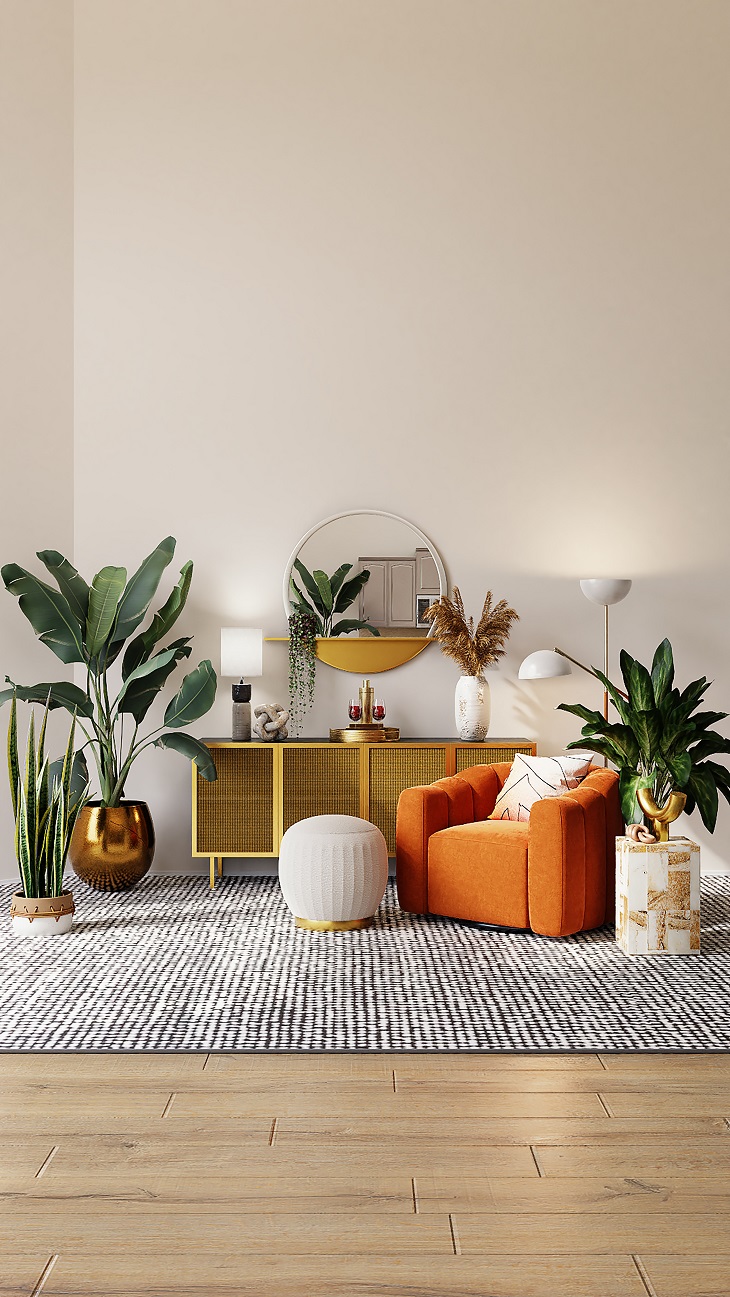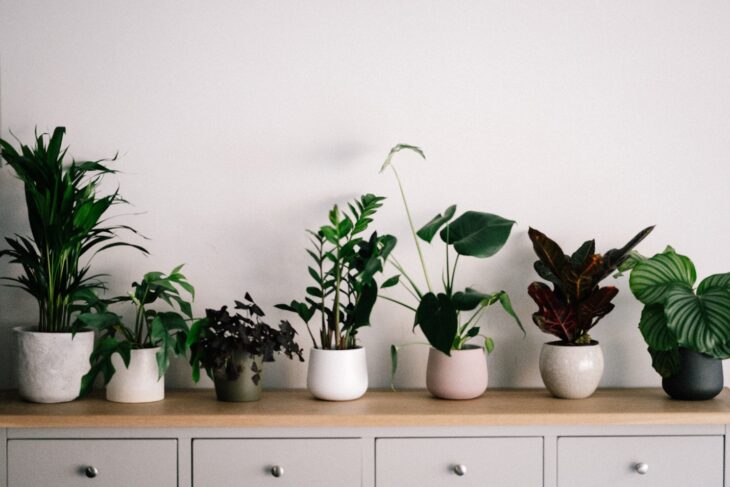If you wish to give your house a new look and liven up the place, then you should consider having house plants. They give color to your house and give a natural vibe to the surrounding. There are many things to think about and take care of before and after owning house plants.
This article will give you a complete guide to house plants; about their types, maintenance, and dos & don’ts.
What are house plants and how to plant them?
House plants are the plants that are ideal to grow inside the house. Their requirements make it suitable to thrive in the environment inside the house. They are used for decorative purposes indoors with the additional health benefit of improving the air quality inside and uplifting spirit.
You plant such house plants in pots or similar containers (generally decorative containers are chosen for the purpose of aesthetics indoors). Most of these plants are tropical so they are suitable to grow in partial sunlight and at room temperature.
House plants require proper care with respect to sunlight, water, pots, soil, temperature, humidity, and fertilizer. The details are given below.
Requirement of sunlight
Sunlight is a very important nutrient for plants to carry out photosynthesis. Different house plants have different kinds of light requirements. When you go to a shop or a nursery to pick out the saplings you want, the shopkeeper can tell you one of the 3 things;
- Plants require full sunlight: This means they need bright sunlight constantly. The ideal place to keep such plants is by the window where they can receive direct sunlight.
- Plants require half sunlight: This means they need sunlight but not necessarily constantly. They need little shade as well. It is advisable to keep such plants a little further away from the window where they can still get sunlight but possibly not too bright light.
- Plants require low sunlight: This means that they will prosper more in a shaded area. They would still need sunlight, but not directly and not for long hours. For such plants, you can keep them further inside the house.
Requirement of water
Water is another very important nutrient for all minds of plants. For indoor plants, the most common mistake people do is to over-water them. Once you have decided what plants you want for your home and you buy the sapling, make sure that you know the watering patterns required. Desert plants require very little water whereas tropical plants require more water in comparison with desert plants.
When you buy the saplings, most plants have a “raindrop” symbol tag attached to them. The number of raindrops indicates the intensity of watering required for the plant.
The frequency of watering the indoor plants is also dependent on the size of its container as well as the moisture content of the soil it is planted in.

Requirement of pots
House plants reside in the pots. Their whole world is limited to their pots. The nutrients they get in the form of soil, water, and sunlight are contained in the pots. That is why it is very important to choose an appropriate pot that your plant can sustain. Finding the correct size of the pot with respect to your chosen plants is the first step.
Sometimes the plants become root-bound when kept in the same pot for a long time. There are certain signs your potted plants show indicating that there is a need for repotting them. The signs are- roots are growing on top of soil or down the pot; the pot looks swollen as if it will burst open; water runs out of the pot without soaking in; plant overflows from the pot.
When such signs are seen you should repot the plants possibly in a bigger container (not very large for the plant). Also, make sure that the new pot has drainage holes for better plant health.
Requirement of soil
Soil is the source of nutrients for all kinds of plants. But you need to keep in mind that the type of soil required for an indoor plant is very different than that of a garden plant. That is why it is advisable that before planting the indoor plants, research the type of soil your chosen plants need to grow healthy.
The type of soil required for an indoor plant is also dependent on the quantity and frequency of water needed by the plant. For example, for fast draining requirement plants, a sandy mix is the best option whereas, for plants that don’t require frequent watering, fine dirt soil is preferable.

Requirement temperature
As the plants are indoor plants, the normal temperature for them to grow healthily is room temperature. Extreme high or low temperatures can have an adverse effect on these plants. Even a rapid switch in the temperature can affect their health. That is why you should make sure that their optimal growing temperature is maintained in the room they are kept and it is not a near heater, radiator, fireplaces, vents, or AC.
Requirement of humidity
Most indoor plants are tropical plants that thrive in summer, which means they want humidity. This poses a problem when it is winter and moisture content in the air diminishes. Additionally, when you use the heater in the winter, it gets worse for the plants.
To cope with this problem, you can keep the surrounding of the plants more humid and you can keep them regularly hydrated.
Requirement of fertilizer
With the nutrients plants receive from sunlight, soil, and water, it would be beneficial for them if they receive additional nutrients in the form of fertilizers. It helps in replenishing the nutrients in the soil and helps them in their growth.
House plants require every small quantity of fertilizers. Organic fertilizers in general are advisable to use because they are not very harsh on plants and will help them grow at their own pace. Also, another thing to keep in mind is that you should add fertilizers during their growing season only. Adding fertilizers otherwise will cause stress to the plants and damage them in the long run.
Best indoor plants for beginners
In this section, I have listed some of the house plants which are not high maintenance and are perfect for beginners.
- Succulents
- Dracaena
- Peace lily
- Parlor palm
- Pothos
- Ferns













